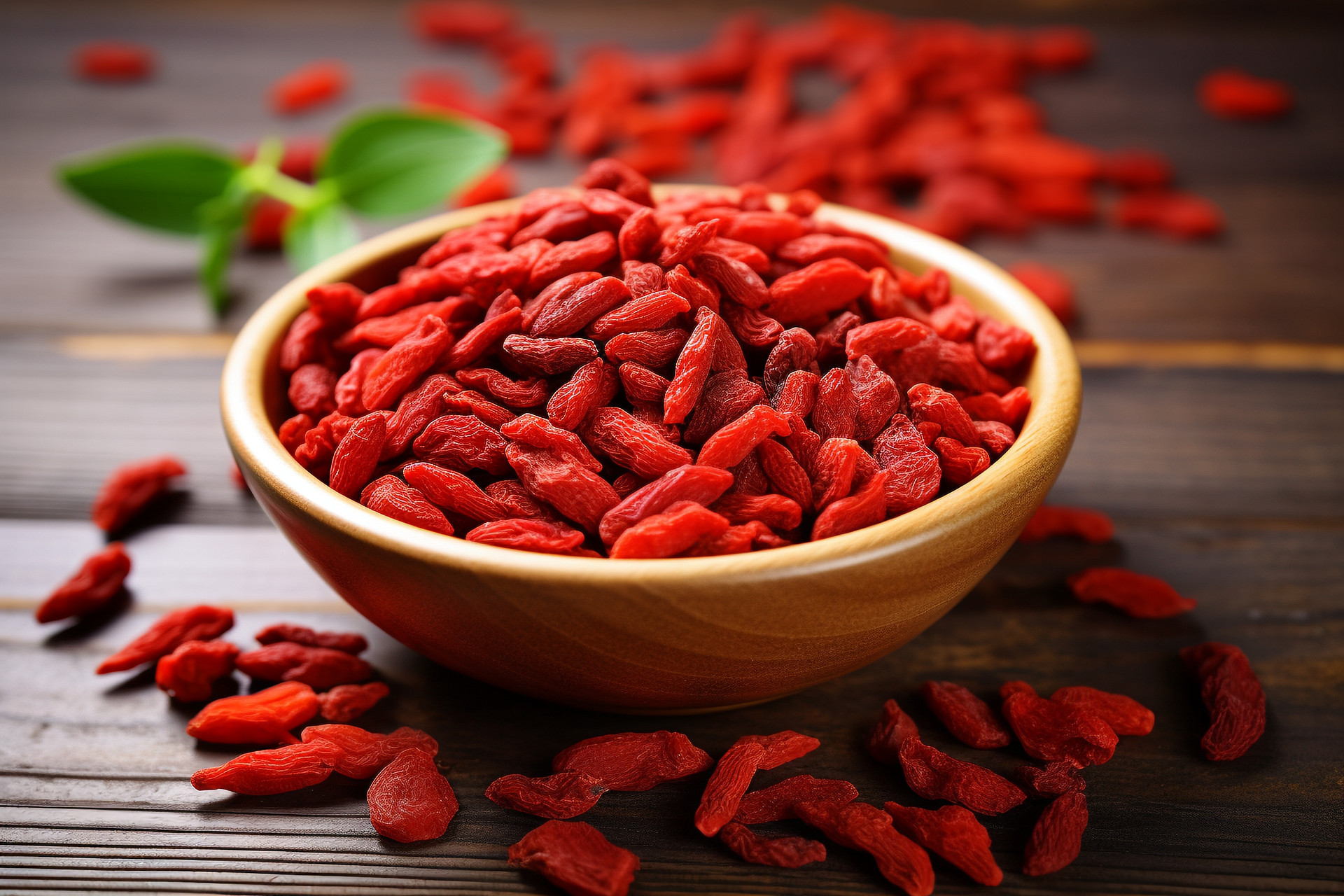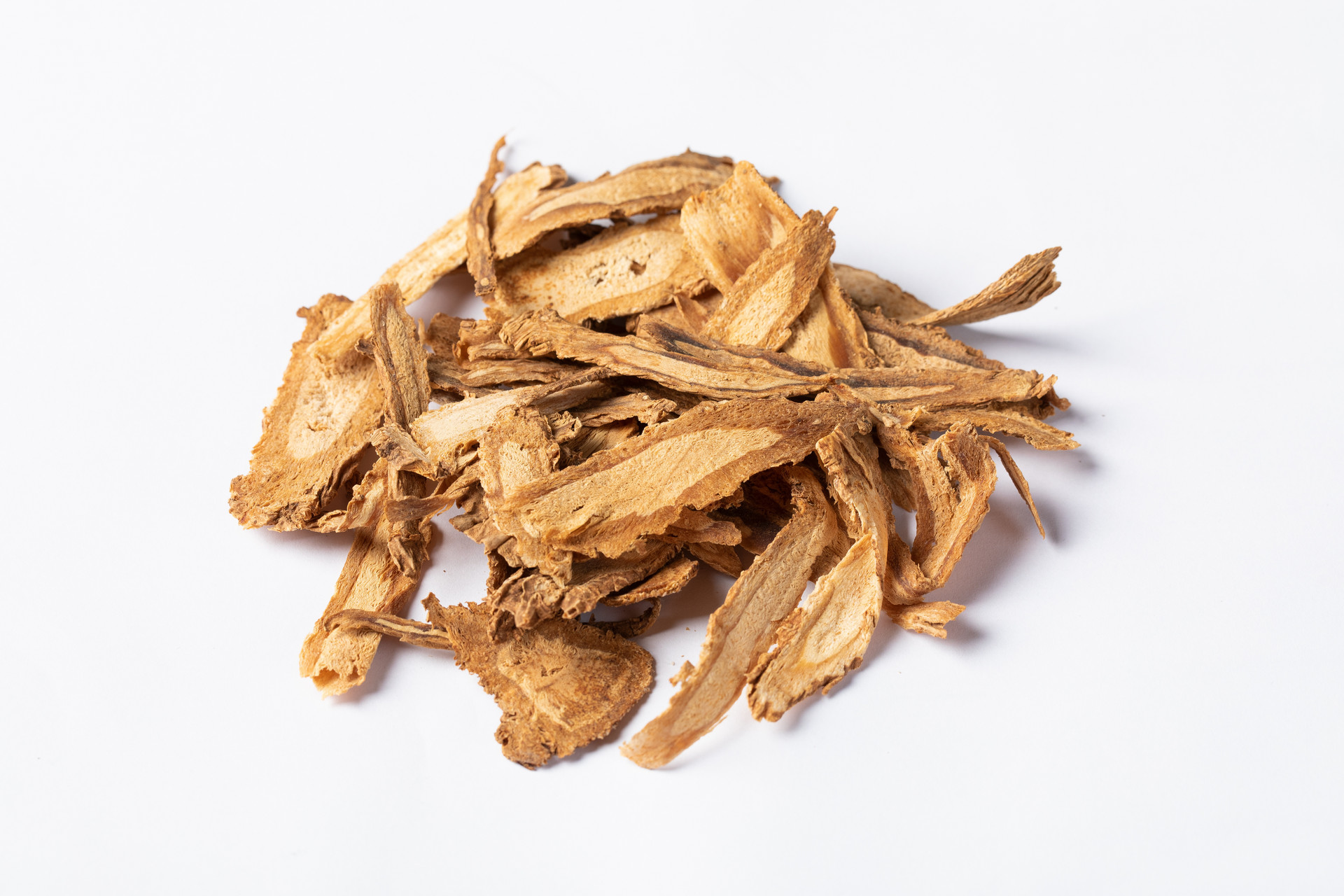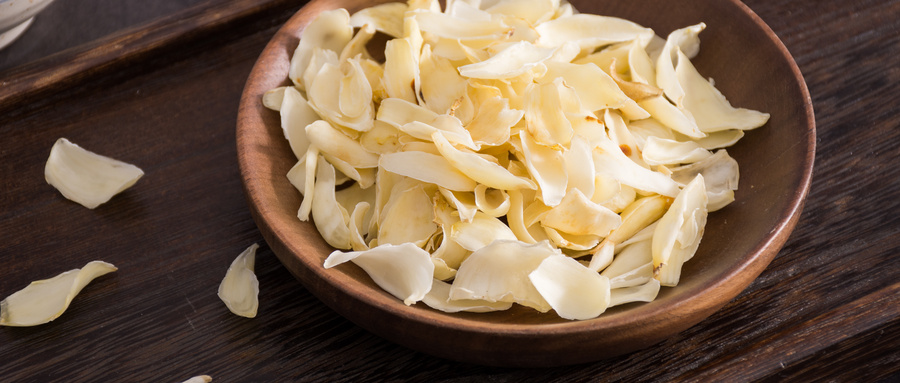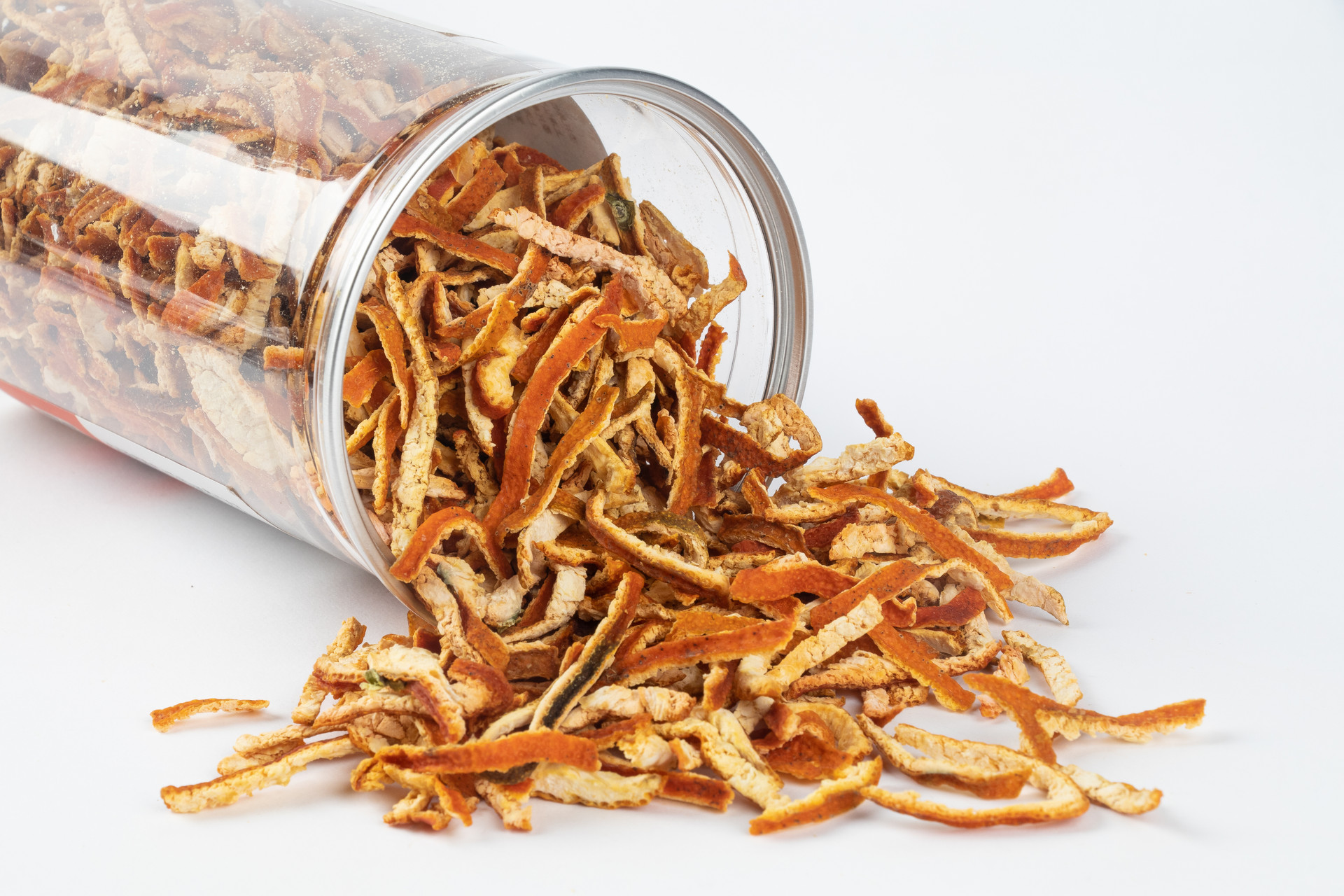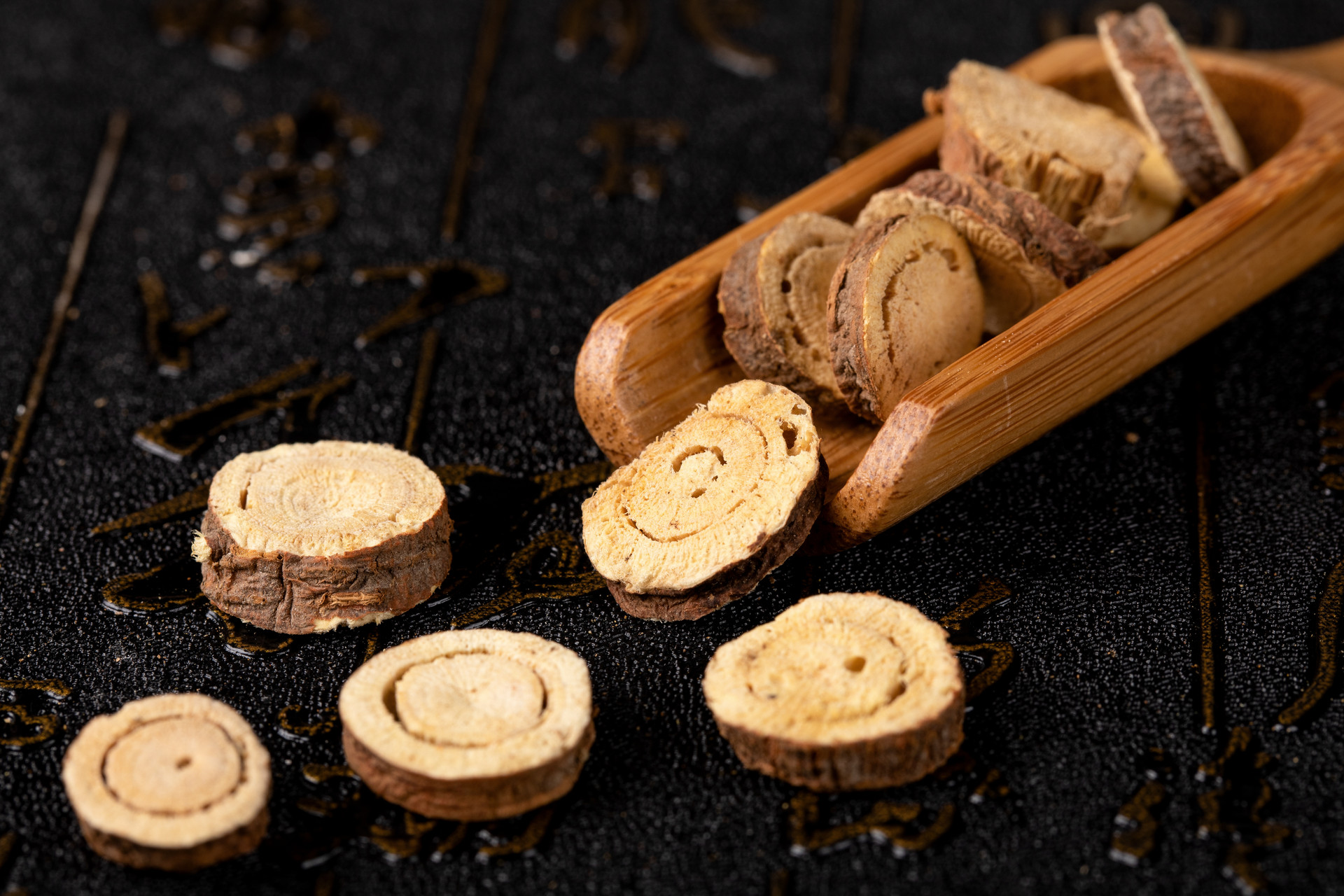Tu Jingpi, also known as Tu Jinpi, Jing tree bark, or Pseudolarix kaempferi bark, is the root bark or near-root bark of the plant Pseudolarix kaempferi Gord. It is harvested in the summer and dried.
Processing method: Take the original herbal medicine, remove impurities, wash it, soak it until moist, cut it into strips, and dry it.
Appearance of the herbal slice: It is an irregular filamentous slice, with a gray-yellow rough surface on the outer layer of the root bark, with wrinkles and gray-white transverse skin pores. The rough bark often peels off in scales, revealing a reddish-brown inner bark. The tree bark is dark brown, with thick outer bark and a cracked appearance. The inner surface of the root bark is yellowish-brown to reddish-brown, flat, with fine longitudinal textures. The tree bark is rough. When broken, it is reddish-brown, with fibrous inner bark and granular outer bark. It has a tough texture. It has a slight aroma, bitter and astringent taste.
Processing effect: Tu Jingpi has a pungent and warm nature and is toxic. It belongs to the lung and spleen meridians. It has the functions of killing insects and relieving itching. It is mostly used fresh and is used for scabies and itching. It can be used externally, such as for treating tinea manuum, tinea pedis, and tinea cruris with compound Tu Jinpi lotion (as mentioned in the "Chinese Medicine Formulation Manual"). Processing makes the herbal medicine clean, facilitating formulation and the dissolution of components.




